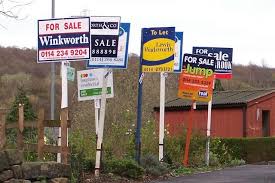
House prices perform better in areas with higher employment.
That is according to a report by the Bank of Scotland on the relationship between the jobs and property markets. In Fife, house prices rose by 2-percent in areas with high employment, but fell by 5-percent where joblessness was more widespread.
According to the bank, there is a clear link between levels of employment and house price performance in recent years. Those areas with the highest average levels of employment since 2009 have, on average, recorded bigger house price gains. For example, the five local authority districts (LADs) with the highest employment have experienced average house price rises of 14% (£23,462) since 2009, compared with an increase of 2% for Scotland as a whole.
The average house price in the 10 LADs that recorded the highest employment rate between 2009 and 2015 rose by £9,554 (6%). However, looking further afield to the top 20 LADs, they have seen an average increase of only 2% (£2617); in line with the average for Scotland.
In stark contrast, those areas with the highest levels of unemployment – as measured by the claimant count - have typically underperformed the Scottish average. The 20 areas with the highest levels of unemployment have recorded an average house price fall of 8% (£11,252). The five areas with the highest unemployment rate have seen a 7% drop in the value of their homes.
Nitesh Patel, economist at Bank of Scotland, said;
"There has been a very clear relationship between conditions in the Scottish jobs market and house price performance during the period since the housing market downturn between 2007 and 2009. Those areas with high levels of employment have tended to record above average house price growth. Areas with high unemployment levels have, on the other hand, typically underperformed."


 Man, 44, seriously injured in hospital after crash between Comrie and Rosyth
Man, 44, seriously injured in hospital after crash between Comrie and Rosyth
 John Swinney announces SNP leadership bid
John Swinney announces SNP leadership bid
 Closures on A92 from TONIGHT for roadworks
Closures on A92 from TONIGHT for roadworks
 13°C
13°C
 11°C
11°C
 17°C
17°C